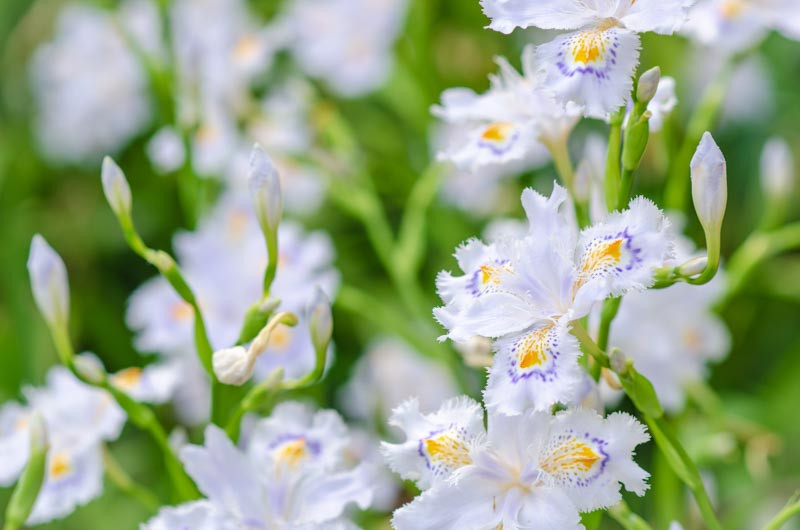Iris Species
Beyond the popular Bearded, Siberian, Louisiana, and Japanese Irises, a wide array of equally stunning Iris species await discovery by gardeners. These diverse plants can provide unique aesthetic qualities and adaptability that make them ideal for various garden settings.
Growing native iris species in your garden has several significant benefits:
Adapted to Local Conditions: Native iris species have evolved to thrive in local conditions. They’re often more resistant to local pests and diseases and can handle the area’s typical weather and soil conditions. This makes them generally lower maintenance and more likely to thrive with less intervention.
Support Local Ecosystems: Native irises can play a crucial role in supporting local ecosystems. They provide food and habitat for local wildlife, including beneficial insects. Their flowers are often designed to attract specific local pollinators, contributing to the biodiversity of your garden.
Drought and Disease Resistant: Many native iris species are drought resistant and have natural defenses against local pests and diseases. This means they typically require less watering and fewer pesticides, making them an environmentally friendly choice.
Diversity: There’s a surprising diversity among native irises, with species adapted to a range of different environments. This means there’s likely a native iris that’s well suited to any particular garden microclimate, whether it’s a dry, sunny rock garden or a damp, shady woodland garden.
Heritage and Conservation: Growing native plants helps conserve the biodiversity of your local area. It can also help foster a sense of place and connection to the local natural heritage.
By exploring these less common iris species, gardeners can enjoy a broader palette of colors, shapes, and blooming times, enhancing their gardens with these beautiful and versatile plants.

